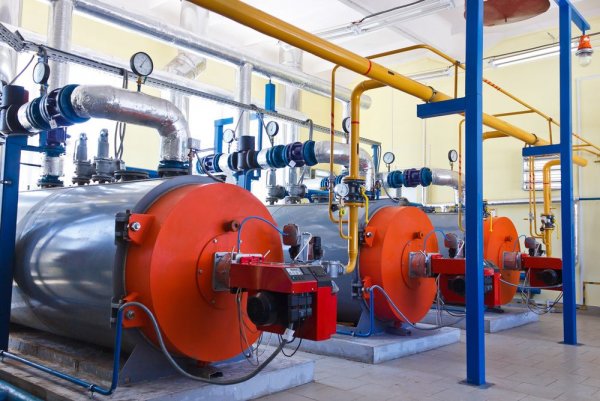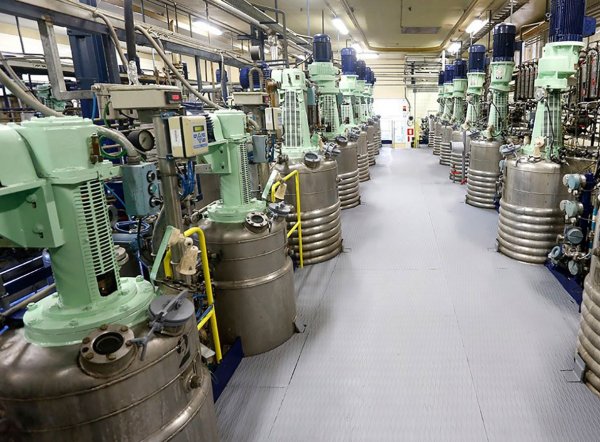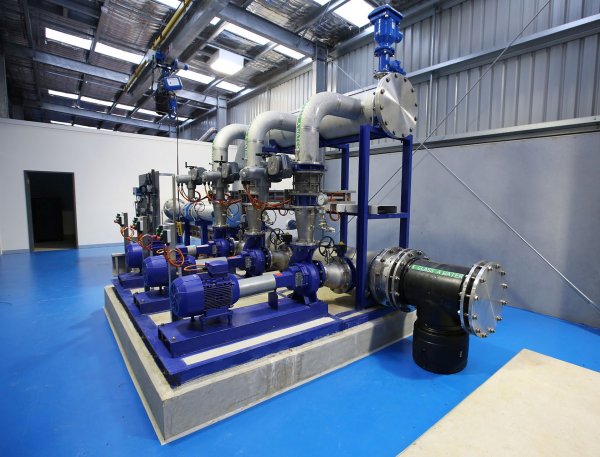Factors affecting the magnitude and graph of the received load from a group of electrical consumers
The resulting load on each element of an electrical installation (line, transformer, generator), as a rule, is not equal to the sum of the nominal powers of the connected electrical receivers and is not a constant value. For the most part, the load continuously changes in time from a certain maximum to a minimum, depending on the load mode of each of the connected electrical receivers and the degree of coincidence of their switching periods.
Depending on the technological mode charging schedule each consumer of electricity, even within one cycle of operation, is constantly changing. Load peaks are different in magnitude and duration. These are replaced by sags, and during periods of braking, motors in some cases turn from consumers of electricity into generators, giving the braking energy to the grid.
Therefore, even if all consumers of electricity were simultaneously turned on and operating at full load, then even then the resulting load, as a rule, cannot be a constant value and equal to the sum rated strength all associated electrical appliances. But in addition, there are a number of other factors that determine the variable nature of the resulting load and its further reduction.
Rated or installed power of the electrical receiver this is the power indicated by the manufacturer in its passport, that is, the power for which the electric receiver is designed and which it can develop or consume for a long time under certain environmental conditions at the nominal voltage and the operating mode for which it is designed.
For electric motors, rated power is expressed in kilowatts applied to the shaft. In fact, the power consumed by the network is greater with the amount of losses. For other consumers of electricity, the rated power is expressed in kilowatts or in kilovolt-amperes consumed by the network (see — Why transformer power is measured in kVA and motor in kW).
In order to avoid errors, it is necessary when examining existing installations to identify the design coefficients, as well as when designing new installations, to summarize the nominal power of electrical consumers expressed in the same units of measurement. It was agreed that they should be expressed in nominal kilowatts of continuous operation.
In this case: for electric motors, the nominal powers are added up, not the power consumed by them from the grid; in other words, the efficiency of the electric motors is neglected, since it cannot significantly affect the results due to the small difference in values, and since the calculated coefficients are revealed to existing installations with the same assumption; the nominal power of electrical receivers with continuous operation, expressed in kilovolt-amperes, is converted into kilowatts according to the passport data at a nominal power factor.
Although the standard dimensions of technological machines and devices are standardized, but even for large-scale production and automatic lines with a constant technological process, it is not possible to choose machines that exactly match according to the nominal capacity for a given technological unit.
Moreover, it is not possible to do this in installations with a variable technological process, for which the machines are deliberately selected by the technologists, taking into account the necessary, albeit rare, maximum and "x productivity in certain periods of production.
In such installations, the machines are only partially loaded, and sometimes they are completely idle. Electric motors if necessary, they are calculated by the manufacturer - the supplier of the machine according to its nominal capacity and selected from the standard range of nominal powers of the engine with a certain margin. Therefore, even when the machine is operating at full capacity, its electric motor rarely has a rated load.
When the machine is used in a process unit that is not at its rated capacity, its electric motor often operates with a significant underload.
Replace such an underloaded electric motor operating personnel for the most part do not have the opportunity, since, firstly, such a restructuring of the technological process is not excluded, in which the machine will be fully loaded, and secondly, modern machines are delivered complete with engines and control equipment, specially installed to them (built-in, flanged, common-shaft, special gears, regulating devices, etc.), which would require an extremely large fleet of spare engines and equipment of various capacities to replace.
Any mechanism inevitably has periods of downtime for unloading, loading, refueling, changing tools and parts, and cleaning. It also stops for planned preventive and basic repairs.
In installations with a large number of mechanisms, where the technological relationships between the mechanisms are not clearly expressed, i.e. where there is no continuous flow of processed materials or products from mechanism to mechanism, and therefore the mechanisms operate practically independently of each other, such stops are carried out sequentially, during the operation of other mechanisms, and this significantly affects the nature and magnitude of the resulting load.
In addition to the electric motors of the main drives, there are a large number of engines for auxiliary devices that mechanize auxiliary operations: for turning the parts of the machine during its adjustment, for unloading and loading, for collecting waste, turning valves, transferring gates, etc.
The primary purpose of these motors and other similar electrical receivers (eg magnets, heaters, etc.) is such that they cannot be switched on and running when the prime mover is running. This also significantly affects the magnitude and nature of the resulting load.
Due to the combination of these reasons, even in a plant that works rhythmically at full capacity and mechanisms well matched for their work, the resulting load, for the most part, continuously varies within limits that are only a small part of the sum of the nominal powers of all connected electrical consumers.
The value of this share depends not only on the nature of production (on the technological process), the organization of work and the modes of operation of individual mechanisms, but, of course, on the number of connected electrical receivers. The greater the number of independently operating electrical receivers, the smaller the part of the sum of their nominal powers as a result of the load.
In some cases, even in installations operating quite rhythmically at full performance, the resulting load can be no more than 15-20% of the sum of the rated powers of the connected electrical receivers and this can in no way serve as an indicator of poor use of process machinery and electrical equipment.
It is evident from what has been said that the correct determination of the design loads is of utmost importance. This determines, on the one hand, the possibility of reliable, continuous operation of the designed technological unit with its full production capacity and maximum productivity, and on the other hand, the amount of capital costs, the consumption of very valuable materials and equipment for the construction of the electrical part of the installation and the economic efficiency of its work.
Strictly speaking, all the art of an electrical engineer, inventing the most reliable and, moreover, simple in operation, economical ways of supplying power to the projected installation, all circuit solutions, calculations for the selection of wires, apparatus, equipment, converters and transformers, all this can be reduced to zero due to the fact of incorrectly defined design loads, which serve as the basis for all subsequent calculations and decisions.
When designing new installations, in many cases it is advisable and even necessary to foresee in advance a reserve in the capacity of generators, transformers, apparatus and wires, taking into account the expected expansion of the installation. On this basis, it is sometimes argued that there is no particular need to strive for more or less accurate determination of design loads, since the margin in them will never hurt.
Such statements are incorrect. In the absence of proper calculations, you can never be sure design load will not be underestimated and the designed electrical installation will be able to satisfy the needs of the enterprise. We also cannot be certain that inventories will not prove to be excessive.
Also, stocks hidden in miscalculations can never be accounted for. Where necessary, obviously required stocks will be added to hidden stocks.
As a result of such calculations, the total inventory will always be excessive, the capital costs will be unreasonably high, and the plant will operate uneconomically. Therefore, design loads should always be calculated with the greatest possible care, and necessary reserves should be added to them only deliberately and judiciously, and not by applying random design factors that create hidden reserves.



